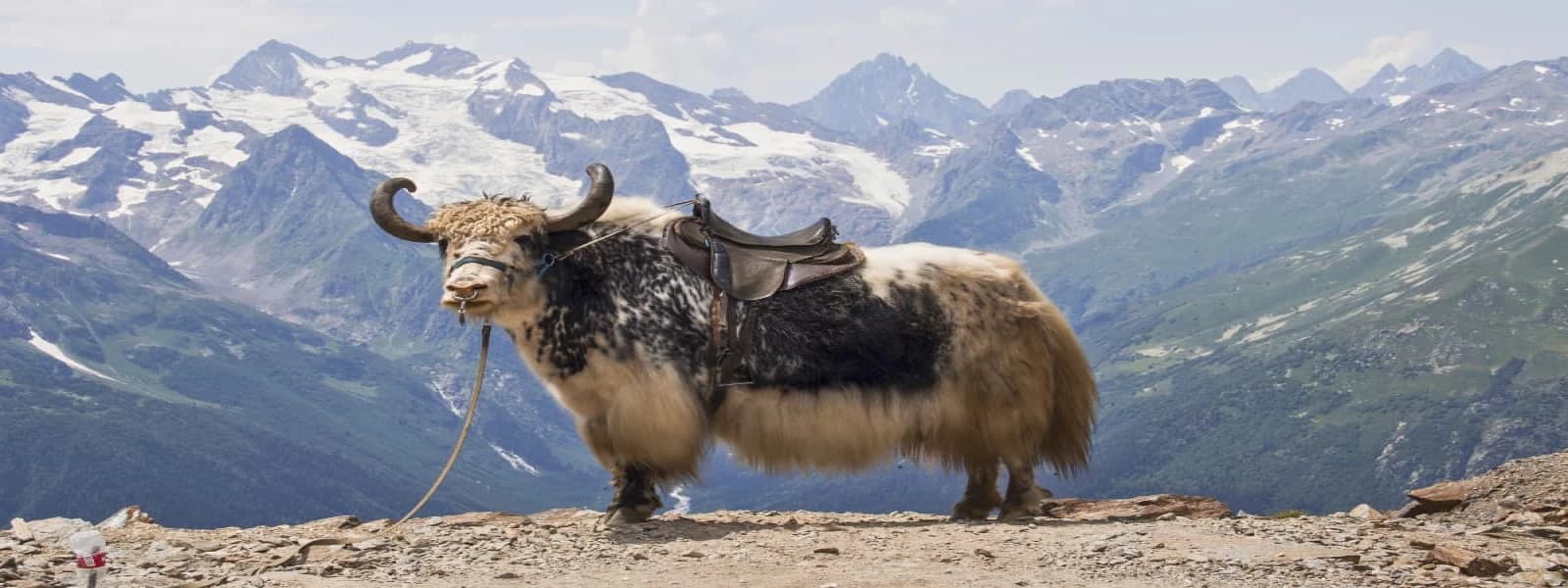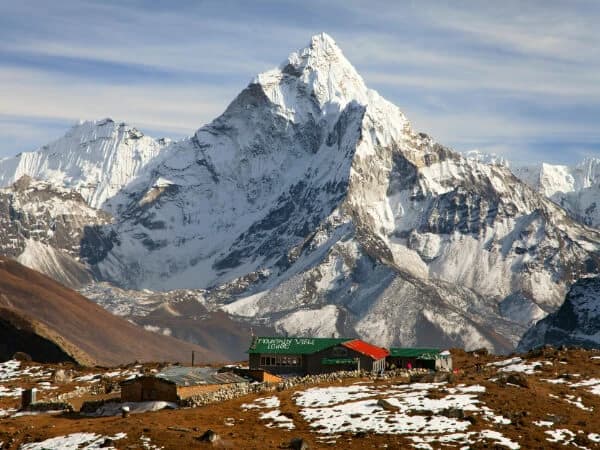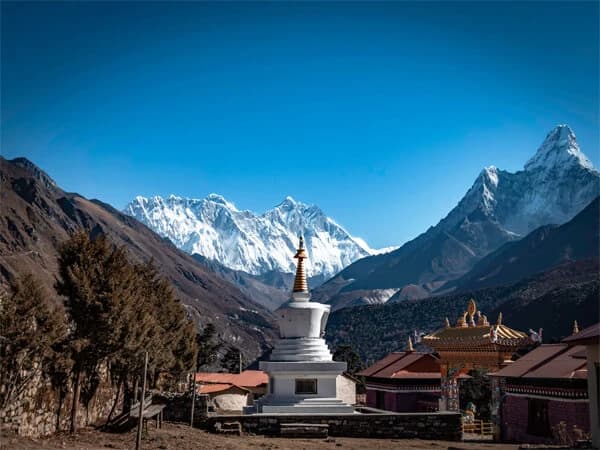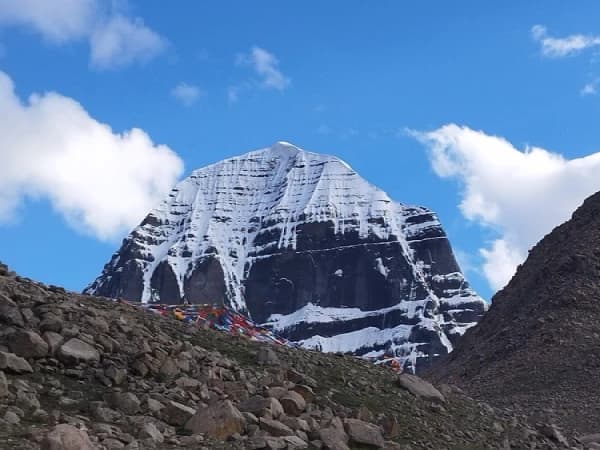Despite its formidable heights and harsh climate, Mount Everest teems with life, from the elusive Snow Leopard to the vibrant Himalayan Monal. Each species plays a vital role in the mountain's ecosystem, demonstrating the incredible adaptability of wildlife in one of the world's most challenging environments.
What Animals Live on Mount Everest?
Mount Everest isn’t just the tallest mountain in the world; it’s a marvel of life nestled within one of the most challenging ecosystems on Earth. From the snow-covered summit to the forested lower regions, this iconic peak is home to a surprising variety of wildlife. These creatures showcase extraordinary resilience, thriving against all odds in thin air, extreme cold, and rugged terrain.
This article delves into the fascinating world of Mount Everest’s animal life, exploring how these species adapt to their harsh environment, the ecosystems they inhabit, and the efforts to conserve this fragile biodiversity.
Geography and Climate of Mount Everest
Mount Everest, part of the majestic Himalayan mountain range, towers at 8,848 meters (29,031 feet), straddling the border between Nepal and Tibet. This colossal peak is more than a geographical landmark—it is an ecological treasure trove, hosting distinct climate zones that shape its unique biodiversity.
Climate Zones of Everest
Alpine Zone
Above 4,000 meters, this zone is characterized by extreme cold, minimal vegetation, and harsh winds. Despite these conditions, hardy animals like the Himalayan Tahr and Snow Leopard find ways to survive here.
Subalpine Zone
Below the alpine region, this zone supports more vegetation, including shrubs and alpine meadows, creating habitats for species like Red Pandas and Musk Deer. The biodiversity here is comparatively richer due to slightly milder conditions.
Summit Zone
The area above 8,000 meters, often referred to as the “death zone,” is nearly lifeless due to severe cold, limited oxygen, and hostile terrain. However, some birds, such as the Bar-headed Goose, have been spotted flying over this perilous altitude during migration.
How the Environment Shapes Biodiversity
The harsh conditions of Mount Everest pose immense challenges for animal life. Freezing temperatures, scarce vegetation, and low oxygen levels demand exceptional physical and behavioral adaptations. Animals here exhibit traits like thick fur, efficient respiratory systems, and seasonal migrations to cope with their environment.
Biodiversity in the Everest Region

Mount Everest boasts a range of habitats, each supporting a variety of animal and plant species. The mountain’s steep gradients and fluctuating altitudes create distinct wildlife zones, from barren alpine regions to lush subalpine areas teeming with life.
Overview of Wildlife Zones

Alpine Zone (Above 4,000 meters)
The barren alpine zone is home to iconic species like the Snow Leopard, a stealthy predator with a thick fur coat and long tail for balance on rocky terrain. The Himalayan Tahr, a wild goat known for its agility, grazes on sparse vegetation along steep slopes.
Subalpine Zone (3,000–4,000 meters)
With denser vegetation, this zone supports herbivores like the Red Panda, which thrives in bamboo-rich forests, and the Musk Deer, often hunted for its valuable musk glands. These animals depend on the abundance of alpine meadows and shrubs for survival.
Mid-Altitude Zones (Below 3,000 meters)
This region offers the richest biodiversity, hosting numerous bird species and small mammals. Here, you’ll find animals like Himalayan Marmots and birds such as the vibrant Himalayan Monal, Nepal’s national bird.
Flora of Mount Everest
While animals steal the spotlight, the flora of Mount Everest plays a vital role in sustaining life. The region is covered with alpine grasses, shrubs, and medicinal herbs, which provide essential food and shelter for herbivores like the Himalayan Tahr. Plants like juniper and rhododendron are also integral to the ecosystem, stabilizing soil and supporting pollinators.
High-Altitude Animals of Mount Everest
The Everest region is home to animals that have adapted remarkably to life in high-altitude, extreme environments. From stealthy predators to resilient herbivores and high-flying birds, these creatures are testaments to nature’s ingenuity.
Apex Predators
Snow Leopard

Known as the "ghost of the mountains," the Snow Leopard is the apex predator of the Everest region. Its adaptations, including a thick fur coat and a long tail for balance, allow it to thrive in rocky terrains. Rarely seen, it plays a critical role in maintaining the ecological balance by controlling herbivore populations.
Mammals
Himalayan Tahr

Agile and sure-footed, these wild goats navigate the steepest of slopes with ease. They graze on alpine grasses and shrubs, forming a crucial part of the food chain.
Pikas

These small, rabbit-like herbivores burrow under the snow to survive Everest’s harsh winters. They are vital for the ecosystem, providing food for predators like the Snow Leopard.
Himalayan Marmots

Found in social colonies, marmots hibernate during the coldest months. Their burrowing helps aerate the soil, benefiting plant life in their habitats.
Birds
Himalayan Monal

Nepal’s national bird, this large pheasant-like species dazzles with its colorful plumage. It inhabits subalpine and alpine meadows, playing a role in seed dispersion.
Snow Partridge and Tibetan Snowcock

These hardy birds forage in high-altitude meadows, surviving on seeds and insects.
Raptors: Lammergeier and Golden Eagle

The Lammergeier, or Bearded Vulture, is a scavenger known for its unique habit of dropping bones from great heights to access the marrow. The Golden Eagle is a powerful hunter, preying on small mammals and birds.
Insects and Arthropods
Even in high-altitude extremes, insects find ways to survive. High-altitude butterflies and resilient beetles are examples of arthropods that have adapted to Everest’s freezing conditions, contributing to the ecosystem by pollinating plants and decomposing organic material.
Mid-Altitude Animals of the Everest Region
The mid-altitude zones of the Everest region, ranging from 2,000 to 3,500 meters, are rich in biodiversity. This area provides slightly milder conditions, supporting both wild and domesticated animals that coexist with human settlements. Despite its relative abundance of resources, this zone still presents challenges, especially for endangered species.
Endangered Species
Red Panda

With its reddish-brown fur and distinctive face markings, the Red Panda is one of the most charismatic inhabitants of this region. It thrives in bamboo forests, feeding on leaves, shoots, and small fruits. However, habitat loss and poaching pose significant threats to this species, making conservation efforts crucial.
Musk Deer

This elusive herbivore is known for its scent glands, which are highly valued in traditional medicine and perfumes. Unfortunately, this has led to widespread poaching, placing the Musk Deer at risk. As browsers, they play an essential role in maintaining the balance of forest vegetation.
Domesticated and Semi-Wild Animals
Yaks

These hardy creatures are lifelines for the local Sherpa communities.
Domesticated Yaks
They provide milk, meat, wool, and transport for goods across rugged terrain. Their ability to survive in low-oxygen conditions makes them indispensable for high-altitude living.
Wild Yaks
Rare and endangered, wild yaks are larger and more aggressive than their domesticated counterparts. Conservationists are working to protect their dwindling populations from habitat encroachment.
Birds
Migratory Birds

Seasonal visitors like Bar-headed Geese astonish scientists with their ability to fly over Everest’s summit during migration. These geese rely on efficient oxygen utilization and powerful wingbeats to endure the thin air.
Mountain Crows (Choughs)

Agile and opportunistic, choughs are often seen scavenging near villages and trekking camps. Their adaptability to both natural and human-altered environments highlights their intelligence and resourcefulness.
Adaptations of Everest Wildlife
The Everest region’s extreme conditions demand extraordinary adaptations from its wildlife. From physical traits to behavioral strategies, these adaptations enable survival in one of the most hostile ecosystems on the planet.
Physical Adaptations
Thick Fur and Specialized Respiratory Systems
Animals like the Snow Leopard and Himalayan Tahr have dense fur to retain heat in freezing temperatures. Many species, including yaks, have specialized lungs and blood with higher oxygen-carrying capacity to cope with thin air.
Enhanced Fat Storage and Camouflage
Marmots and pikas accumulate fat reserves to survive long winters. Camouflage, such as the Snow Leopard’s spotted coat, helps predators and prey blend into rocky terrains.
Behavioral Adaptations
Hibernation, Migration, and Burrowing
Marmots hibernate in underground burrows during winter months, conserving energy when food is scarce. Migratory birds like the Bar-headed Goose avoid extreme cold by traveling to warmer regions. Pikas burrow beneath the snow to escape predators and insulate themselves.
Survival Masters of Everest
Bar-headed Geese
These remarkable birds fly over the Himalayas, including Mount Everest, during migration. Their unique hemoglobin structure allows them to extract oxygen efficiently at high altitudes, while powerful wingbeats help them navigate strong winds.
Snow Leopard
The Snow Leopard’s adaptations make it an apex predator in the Everest region. Its long, thick tail aids in balance on rocky outcrops, while its stealth and sharp senses ensure efficient hunting.
Challenges Faced by Everest Wildlife
The wildlife of Mount Everest endures some of the harshest natural conditions, but environmental and human-induced threats further complicate their survival. These challenges not only affect individual species but also disrupt the fragile balance of the mountain's ecosystems.
Environmental Challenges
Climate Change
Rising temperatures are causing glaciers to melt and altering the habitats of many species. As alpine meadows shrink, animals like the Himalayan Tahr and Red Panda are pushed into smaller, less viable ranges.
Habitat Loss
Expanding human activities, such as deforestation for firewood or construction, have encroached on the natural habitats of endangered animals like Musk Deer and Snow Leopards. This creates fragmented ecosystems, making it harder for species to find food and mates.
Human Impact
Tourism
The increasing popularity of trekking and mountaineering in the Everest region has led to issues like littering, noise pollution, and habitat disturbance. Trails often intersect with wildlife zones, disrupting natural behaviors and making animals more vulnerable.
Poaching
Endangered species such as the Musk Deer are heavily targeted for their valuable glands, while wild yaks are occasionally hunted for meat and hides. This illegal activity threatens the survival of these species.
Limited Resources
The scarcity of vegetation and food sources at high altitudes intensifies competition among herbivores. This ripple effect can also reduce prey availability for predators like the Snow Leopard.
Conservation Efforts in the Everest Region
Recognizing the importance of preserving Mount Everest's unique biodiversity, local communities, governments, and international organizations have launched several initiatives to protect its wildlife and ecosystems.
Protected Areas
Sagarmatha National Park
Designated a UNESCO World Heritage Site in 1979, this park covers 1,148 square kilometers and provides a safe haven for iconic species like the Himalayan Monal and Snow Leopard. Its diverse landscapes include forests, alpine meadows, and glaciers.
Local Sanctuaries
Buffer zones around Sagarmatha National Park aim to minimize human-wildlife conflict while supporting biodiversity. These areas serve as transitional habitats for animals migrating between higher and lower altitudes.
Community Initiatives
Sherpa-Led Conservation Programs
Local Sherpa communities have spearheaded efforts to protect wildlife by combining traditional ecological knowledge with modern conservation practices. These initiatives include wildlife monitoring, reforestation, and education programs.
Eco-Tourism
Sustainable tourism practices, such as waste management systems and ethical wildlife viewing, help reduce the environmental impact of trekking and climbing. Revenue from eco-tourism also funds local conservation projects.
NGOs and Global Efforts
Snow Leopard Conservation Programs
Organizations like the Snow Leopard Trust collaborate with local communities to monitor and protect these elusive predators. Anti-poaching patrols and habitat restoration projects are key components of these efforts.
International Collaboration
Partnerships with global conservation organizations and funding from international donors help address challenges like habitat loss and climate change. These collaborations often include scientific research and policy advocacy to promote biodiversity in the Everest region.
Wildlife Along the Everest Base Camp Trek
The Everest Base Camp (EBC) trek offers not just breathtaking scenery but also an opportunity to encounter the unique wildlife of the Himalayan region. Along the trails, trekkers can observe a mix of domesticated animals, small mammals, and vibrant bird species, making the journey a delight for nature enthusiasts.
Commonly Seen Animals
Yaks
Yaks are a common sight along the trek, often used by locals and guides to transport goods.
- Domesticated Yaks: These hardy animals are a lifeline for the Sherpa community, providing milk, meat, and wool.
- Wild Yaks: Though rarer, wild yaks can occasionally be spotted grazing on remote slopes.
Birds
The region is rich with avian life, including:
- Himalayan Monal: Nepal’s national bird, recognized for its iridescent plumage.
- Choughs: These intelligent mountain crows often scavenge around trekking villages.
- Lammergeiers (Bearded Vultures): These large scavengers can be seen gliding over the valleys, known for their bone-cracking habits.
Small Mammals
- Pikas: These small, rabbit-like herbivores are often seen darting between rocks.
- Himalayan Marmots: Social and playful, they are frequently spotted sunbathing near their burrows.
Tips for Wildlife Spotting
Early Morning Observations
Many animals are most active at dawn, making early hikes a good time for sightings.
Use Binoculars
Many species, especially birds, are best observed from a distance.
Ethical Guidelines
Avoid Feeding or Disturbing Animals
Human food can harm wildlife, and disturbing their natural behaviors can have negative impacts.
Support Eco-Friendly Trekking
Choose operators that prioritize sustainable practices, such as waste management and minimal environmental disruption.
Cultural and Ecological Importance of Everest Wildlife
The wildlife of Mount Everest is not only vital for the ecosystem but also deeply intertwined with the region’s culture and mythology. These animals play critical roles in maintaining ecological balance and hold significant spiritual and cultural value for local communities.
In Himalayan Mythology
Yeti Legends
The yeti, or “abominable snowman,” is one of the most enduring myths of the Himalayas. Though its existence is unverified, locals associate the legend with the spiritual significance of the region’s wilderness.
Spiritual Significance
Animals like the Snow Leopard are revered as symbols of power and beauty, often appearing in Himalayan folklore and traditional art.
Ecosystem Dynamics
Predator-Prey Interactions
The balance between predators like the Snow Leopard and herbivores like the Himalayan Tahr is crucial for maintaining the region’s biodiversity. Predators regulate herbivore populations, preventing overgrazing.
Role of Herbivores
Herbivores such as the Musk Deer and Himalayan Tahr play a vital role in preserving alpine vegetation. Their grazing helps control plant overgrowth, fostering a balanced ecosystem.
Birds as Pollinators and Seed Dispersers
Birds like the Himalayan Monal contribute to the ecosystem by pollinating plants and dispersing seeds, ensuring the regeneration of vegetation in the harsh alpine environment.
Fun Facts About Everest Wildlife
The animals of Mount Everest aren’t just remarkable for their ability to survive in extreme conditions—they’re also full of surprises. Here are some fun and fascinating facts about the region’s wildlife:
Record-Setting Animals
The Bar-headed Goose holds the title for the highest-altitude migration among birds. These geese cross the Himalayas, including Mount Everest, at altitudes exceeding 8,000 meters, showcasing their unmatched endurance.
Unique Behaviors
The Lammergeier, or Bearded Vulture, has an extraordinary feeding habit. To access marrow, it drops bones from great heights onto rocks to crack them open—a behavior almost exclusive to this species.
Rare Encounters
Spotting a Snow Leopard or Red Panda in the wild is a once-in-a-lifetime experience. Their elusive nature and dwindling populations make them some of the most coveted sightings for wildlife enthusiasts in the Everest region.
Final Thoughts
The incredible resilience and diversity of wildlife on Mount Everest offer a glimpse into the wonders of nature's adaptability. From the soaring Bar-headed Geese to the stealthy Snow Leopards, each species contributes to the mountain’s fragile ecosystem in unique and essential ways.
Preserving this biodiversity is not just a responsibility but a necessity. Supporting conservation initiatives, such as anti-poaching programs and habitat restoration, can help protect these species for future generations. Additionally, practicing sustainable tourism ensures that the human footprint remains minimal, safeguarding the region’s natural beauty.
Mount Everest is far more than a destination for adventurers; it is a sanctuary for extraordinary wildlife. It is a peak to marvel at and a habitat to cherish and protect. Let’s ensure its legacy remains as much about its breathtaking biodiversity as its towering heights.
Frequently Asked Questions
Are there any animals that live on Mount Everest?
Yes, several animals have adapted to live in the harsh conditions of Mount Everest. Key species include the Snow Leopard, Himalayan Tahr, Red Panda, Himalayan Monal, and Pikas. These creatures thrive in specific zones ranging from alpine meadows to rocky cliffs. Birds like Lammergeiers and Bar-headed Geese are also common in the region.
What is the creature on Mount Everest?
The Snow Leopard is the most iconic creature of Mount Everest, often referred to as the "ghost of the mountains" due to its elusive nature. This apex predator plays a crucial role in the ecosystem by regulating herbivore populations such as the Himalayan Tahr.
Do we find birds and animals on Everest?
Yes, birds and animals are present across Mount Everest's lower and middle altitudes. Birds like the Himalayan Monal, Lammergeier, and Choughs are common. Mammals such as Himalayan Tahrs, Pikas, and Musk Deer inhabit various elevations, but wildlife becomes scarce above 8,000 meters, known as the "death zone."
Who lives around Mount Everest?
The Sherpa people predominantly inhabited villages near Mount Everest. They are known for their mountaineering skills and close cultural ties to the mountain. Wildlife such as yaks and domesticated animals also form an integral part of the Sherpa community’s daily life.
Can humans live on Mount Everest?
No, the extreme conditions on Mount Everest, particularly in the "death zone" above 8,000 meters, make it impossible for humans to live permanently. Temporary settlements, such as Everest Base Camp, are used during climbing expeditions, but they are not sustainable for long-term habitation.
Has an animal ever climbed Everest?
No animal has climbed to the summit of Mount Everest. While some species, like the Bar-headed Goose, are capable of flying over the mountain, land-dwelling animals cannot survive the extreme conditions at such altitudes.
Is the Yeti a real animal?
The Yeti is a mythical creature from Himalayan folklore. While there is no scientific evidence to support its existence, some theories suggest it may be inspired by sightings of real animals like the Himalayan Brown Bear.
Can Mount Everest be seen from flight?
Yes, Mount Everest is visible from flights that traverse Nepal and Tibet. Many commercial airlines offer scenic views of the mountain, particularly during flights from Kathmandu.
How tall is Mount Everest?
Mount Everest is 8,848.86 meters (29,031.7 feet) tall, making it the highest peak in the world.
Why can birds fly over Mount Everest?
Birds like the Bar-headed Goose can fly over Mount Everest due to their unique hemoglobin structure, which allows efficient oxygen absorption at high altitudes. Their strong wings and aerodynamic bodies also enable them to endure the thin air and harsh winds.
Which God lives on Mount Everest?
In local Sherpa and Tibetan cultures, Mount Everest is regarded as sacred and is associated with the goddess Miyolangsangma, a deity of prosperity and fortune.
Who cleans up Everest?
Clean-up efforts on Everest are led by organizations such as the Sagarmatha Pollution Control Committee (SPCC) and community initiatives supported by Sherpas. These programs aim to reduce waste left behind by climbers and trekkers.
Are Sherpas Tibetan or Nepalese?
Sherpas are an ethnic group native to the Himalayan region, primarily in Nepal. While they share cultural and linguistic similarities with Tibetans, they are distinct in their traditions and history.
Did people live on Mount Everest?
No, people do not live on Mount Everest itself. However, nearby villages, such as Namche Bazaar and Pangboche, serve as permanent settlements for local communities.
What animal lives at the highest altitude?
The Bar-headed Goose holds the record for the highest-altitude living animal, flying over Everest’s summit during migration. Land animals like Himalayan Tahrs and Pikas are found at elevations up to 5,000 meters.
Are there Snow Leopards on Mount Everest?
Yes, Snow Leopards inhabit the Everest region, particularly in rocky alpine zones. They are elusive and endangered, often spotted through camera traps or by local guides.
Does anything grow on Mount Everest?
Yes, plants such as alpine grasses, shrubs, and mosses grow in the lower altitudes of Mount Everest. These plants are critical for supporting herbivores like the Himalayan Tahr and Red Panda.












